
This is such a sick post. The two best renditions of Highway 61 Revisited you're ever going to find. The SACD rip highlights the music in all its messy glory, while the 24/96 Dr. Robert vinyl rip sticks Dylan's voice out front as he condemns everything in his path, then hands you a bone. God. I love this album.
It's also the perfect lead-in to a Rasta jag of epic proportion that will be strictly hardcore and more than likely scare everyone away for awhile. But being that you're still here, enjoy some fat and lossless Dylan!
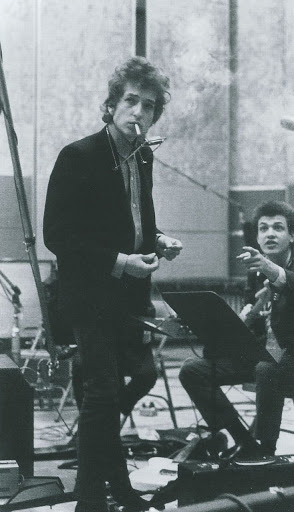
From Hank Kalet at PopMatters:
The year was 1965. America’s involvement in Vietnam is escalating and American troops are sent to the Dominican Republic in an attempt quell a rebellion on the island.
The Johnson Administration announces an anti-poverty initiative as part of his Great Society.
Selma, Alabama is racked with violence as segregationists attack peaceful civil rights marchers and riots break out in Watts, causing 34 deaths and injuries to 1,000 people.
Against this backdrop, Bob Dylan makes what will prove to be a prophetic musical statement, plugging in, turning up the volume and altering the pop music landscape for years to come.
First came Bringing It All Back Home, with one side of electric music and one side of what can best be described as acoustic rock, followed in short order by the single “Like a Rolling Stone”, bursting onto the charts like that first gunshot that started the Revolutionary War, and his controversial electric performance Newport Folk Festival and the single.
And yet, all of that was just prelude. On August 30, Dylan released what remains for me the most electrifying rock-and-roll album of all time, Highway 61 Revisited. From its opening rim shot, which snaps the album into motion, an opening that stands above nearly all others in the history of rock and roll, a crack that strikes deep into the soul, Dylan spins and whirls into a snarling, searing 51 minutes of anarchic imagery and music. This is Bob Dylan at the height of his phantasmagoric powers, the dark visionary, the painter of nightmarish inner landscapes who brings together the strands of disparate worlds, mixes them and deconstructs them, crafting a world of disillusion and alienation that offers what may have been the first inclination that the Age of Aquarius was not all peace and love.
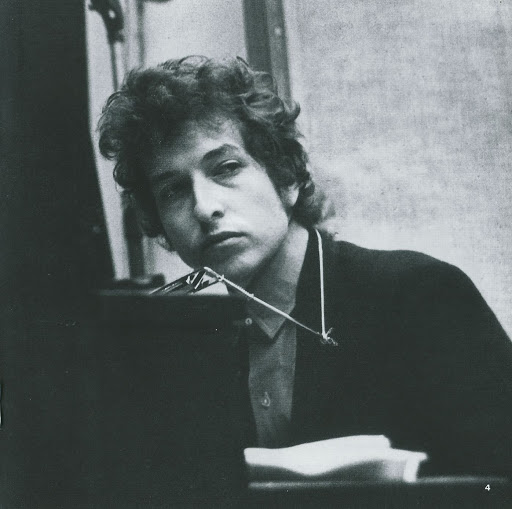
This is an album of brutality and innocence, an album that could only have been produced by an artist at the height of his powers, with a war raging overseas in the shadow of a presidential assassination. It is that rare album on which not only are there no weak cuts, but on which each song is a masterpiece, a classic rock and roll album.
Some history is in order, here. This is Dylan’s second electric effort, released in August of 1965, just five months after the remarkable Bringing It All Back Home. The earlier effort featured an electric side and an acoustic side, though the acoustic songs are nothing like anything he’d recorded in the past. In structure, in approach, they are songs that seem designed for full-band backing.
Dylan had been making the move toward rock and roll for about a year, starting with the release of the more personal Another Side of Bob Dylan, an album that lacked much of the topical fireworks of his two previous albums. Another Side was still a folk album, but sounded different than the folk music that was popular at the time both in terms of content and song structure.
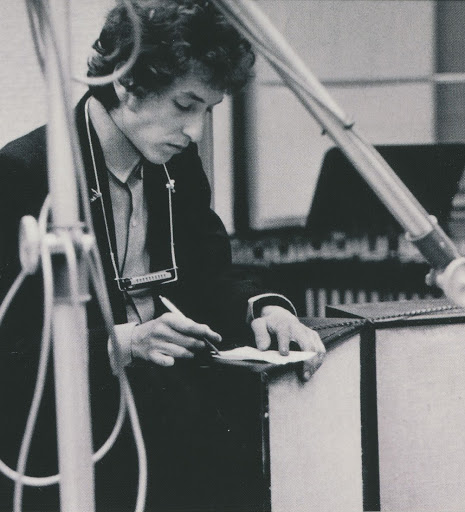
Then in February 1965, Dylan released “Subterranean Homesick Blues”, the rollicking, rocking masterpiece that would forever change how rock and roll would be played from then on. “Subterranean Homesick Blues”, with its images of revolution and chaos, prefigured the pitched political battles that were to soon characterize the decade—but its musical impact was not apparent until the release in July of “Like a Rolling Stone” and Dylan’s fateful appearance at the Newport Folk Festival several days later.
The 1965 festival has taken on mythic stature in the annals of rock and roll and there is some dispute over exactly what happened when Dylan walked on stage dressed in leather jacket and white shirt with snap-tab collar and cranked out his allegory of intellectual freedom, “Maggie’s Farm”, “It Takes A Lot to Laugh” and “Like A Rolling Stone”. There apparently was booing and the crowd was angry—though just how angry and how much booing remains in dispute. He left the stage and came back to play a pair of acoustic songs—“It’s All Over Now Baby Blue” and “Mr. Tambourine Man”—and left again.
He then went into the studio to record what was to become Highway 61 Revisited—and it seems clear from the finished product, at least, that Dylan was affected by what went down at Newport. Much of the album was recorded and finished in the wake of Newport and some of the disc seems in some ways a rebuke to those who had created an image of Dylan that Dylan had no interest in living up to. (The brutal “Positively Fourth Street” was recorded during these sessions, though not included on the album.)

Dylan had already made his statement of liberation on Bringing It All Back Home, when he sang “Well, I try my best / To be just like I am / But everybody wants you / To be just like them. / They sing while you slave and I just get bored. / I ain’t gonna work on Maggie’s farm no more.”
The result is Dylan’s hardest rocking album, an album of biting satire and vituperation, of fevered playing and controlled aggression.
There are the brutal recriminations of “Like a Rolling Stone”, a song so pointedly nasty, so harsh and unforgiving, that it is almost scary. “How does it feel / How does it feel / To be on your own / With no direction home / Like a complete unknown / Like a rolling stone?” Dylan sings, running down the song’s target, a woman who “dressed so fine” and attended “the finest schools” only to find herself finally taken down a peg, lost and alone.
“Princess on the steeple and all the pretty people / They’re drinkin’, thinkin’ that they got it made / Exchanging all kinds of precious gifts and things / But you’d better lift your diamond ring, you’d better pawn it babe,” Dylan sings without sympathy. “You used to be so amused / At Napoleon in rags and the language that he used / Go to him now, he calls you, you can’t refuse / When you got nothing, you got nothing to lose / You’re invisible now, you got no secrets to conceal.”
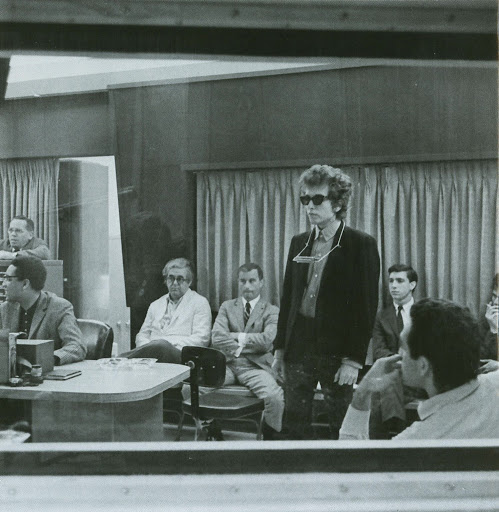
“Tombstone Blues” is a dervish of images and surging, gyrating music—a truly anarchic explosion of music. The key here is the mix—somehow producer Bob Johnston allows each of the players their own space, allows us to hear each instrument as it weaves its musical line in and around the others, with Michael Bloomfield’s biting guitar and Al Kooper’s rambling piano charging up the entire effort.
“It Takes a Lot to Laugh, It Takes a Train to Cry” is Dylan’s easy blues, a hobo song that ambles along its way, the languid beat masking the urgency—hinted at throughout by Dylan’s keening harmonica—an urgency that suddenly spills out in the final verse: “Don’t say I never warned you / When your train gets lost.” That hidden urgency explodes in Al Kooper’s bouncing organ on “From a Buick 6”, as the singer navigates the cruelties of the world, with a little help from his “soulful mama”.
“Ballad of a Thin Man” reprises the theme of dislocation that Dylan raised in “Like a Rolling Stone”, telling the story of a man, Mr. Jones, lost in the modern world, Mr. Jones wandering lost in the wilderness: “Because something is happening here” but he doesn’t “know what it is”. But it also is Dylan’s response to the changing times, a coda to “The Times They Are A-Changin’” in which he derides the comfortable and the would-be opinion makers and trendsetters (He is “well read” and has “many contacts”). There is the chuckle at the end of the first verse that lets you know Dylan has no sympathy for Mr. Jones, the song tracing with a growing derision Mr. Jones’s pretensions and growing alienation—“There ought to be a law / Against you comin’ around.”
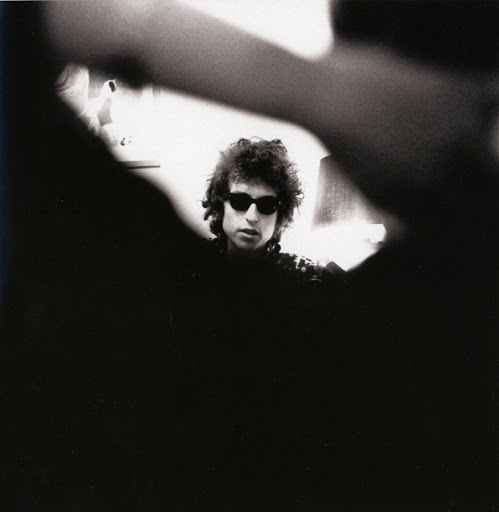
With “Queen Jane Approximately”, Dylan leaves the door open, saying that there might be some relief from the alienation and dislocation—“Won’t you come see me, Queen Jane?”
Then comes the title cut, which kicks off what I’ve always thought of as a three-song nightmare suite: “Highway 61 Revisited”, “Just Like Tom Thumb’s Blues”, and the majestic “Desolation Row”. The songs pile up a series of incongruous images, from the demanding god of Highway 61, where the good, the bad, and the horrid are all quite at home, to the story of Tom Thumb kicking around Juarez.
It is on “Desolation Row” that Dylan brings this nightmare to its logical and illogical conclusion, with a host of unlikely characters—Cinderella, Ezra Pound and T.S. Eliot, Dr. Filth and Nero—casting about in a world that seems to jump off a Brueghel canvas, or maybe out of a William S. Burroughs novel. “They’re selling postcards of the hanging / They’re painting the passports brown / The beauty parlor is filled with sailors / The circus is in town,” Dylan sings atop a truly beautiful guitar line, a slowed-down flamenco riff that seems at odds with the dislocation and brutality of the lyrics.
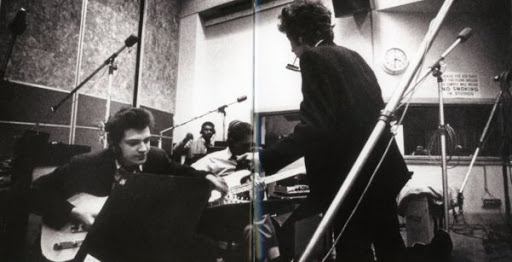
The lyrics are a thick jumble of images, much of them contradictory, leaving us to wonder whether “Desolation Row” is heaven or hell. The Good Samaritan is heading to the carnival, but Casanova is punished for going there. Einstein had been famous “For playing the electric violin / On Desolation Row”, while Ophelia, who finds death “quite romantic”, stares at “Noah’s great rainbow” and “She spends her time peeking / Into Desolation Row.”
And it’s not as if the singer knows the answer either—or that we are asking the right questions: “All these people that you mention / Yes, I know them, they’re quite lame / I had to rearrange their faces / And give them all another name / Right now I can’t read too good / Don’t send me no more letters no / Not unless you mail them / From Desolation Row.”
Highway 61 Revisited does not fit in comfortably with the other trends of its time. It was one of a handful of albums (including the Beatles’ Rubber Soul and Revolver) that gave literate rockers the green light to create a kind of intelligent, probing rock music that had not existed before.
But it also was, in many ways, the first punk-rock album—it has the same sense of antagonistic glee that the Sex Pistols brought to their songs—and hinted at the dissolution and discontent that would come only a few years later, with the assassinations of Bobby Kennedy and Martin Luther King Jr., with Altamont and the deaths of Janis Joplin, Jimi Hendrix, Jim Morrison and others as the ‘60s turned to the ‘70s.

Vinyl Rip Technical Information:
Artist: Bob Dylan
Album: Highway 61 Revisited (The Original Mono Recordings)
Year: 1965
Audio Codec(s): FLAC
Encoding: Lossless
Rip: Vinyl Rip (by Dr. Roberts)
Avg. bitrate: 1630 kb/s
Sample rate: 96000 Hz
Bits per sample: 24
Channels: 2
File size: 577 MB
Length: 0:49:32
Tracklisting:
Side A:
A1. Like A Rolling Stone (6:04)
A2. Tombstone Blues (5:57)
A3. It Takes A Lot To Laugh, It Takes A Train To Cry (3:31)
A4. From A Buick 6 (3:11)
A5. Ballad Of A Thin Man (5:52)
Side B:
B1. Queen Jane Approximately (5:03)
B2. Highway 61 Revisited (3:19)
B3. Just Like Tom Thumb's Blues (5:13)
B4. Desolation Row (11:23)
Original Mono Recordings Megaupload Link
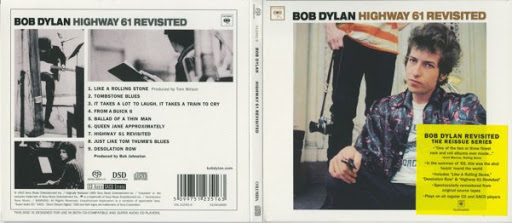
SACD Rip Technical Information:
Artist: Bob Dylan
Album: Highway 61 Revisited
Year: 1965
Audio Codec(s): FLAC
Encoding: Lossless
Rip: SACD Rip
Avg. bitrate: 3153 kb/s
Sample rate: 96000 Hz
Bits per sample: 24
Channels: 2
File size: 1.14 GB
Length: 0:51:32
Tracklisting:
01. Like A Rolling Stone (5:59)
02. Tombstone Blues (5:53)
03. It Takes A Lot To Laugh, It Takes A Train To Cry (3:25)
04. From A Buick 6 (3:06)
05. Ballad Of A Thin Man (5:48)
06. Queen Jane Approximately (4:57)
07. Highway 61 Revisited (3:15)
08. Just Like Tom Thumb's Blues (5:08)
09. Desolation Row (11:18)
SACD Rip Megaupload Links



